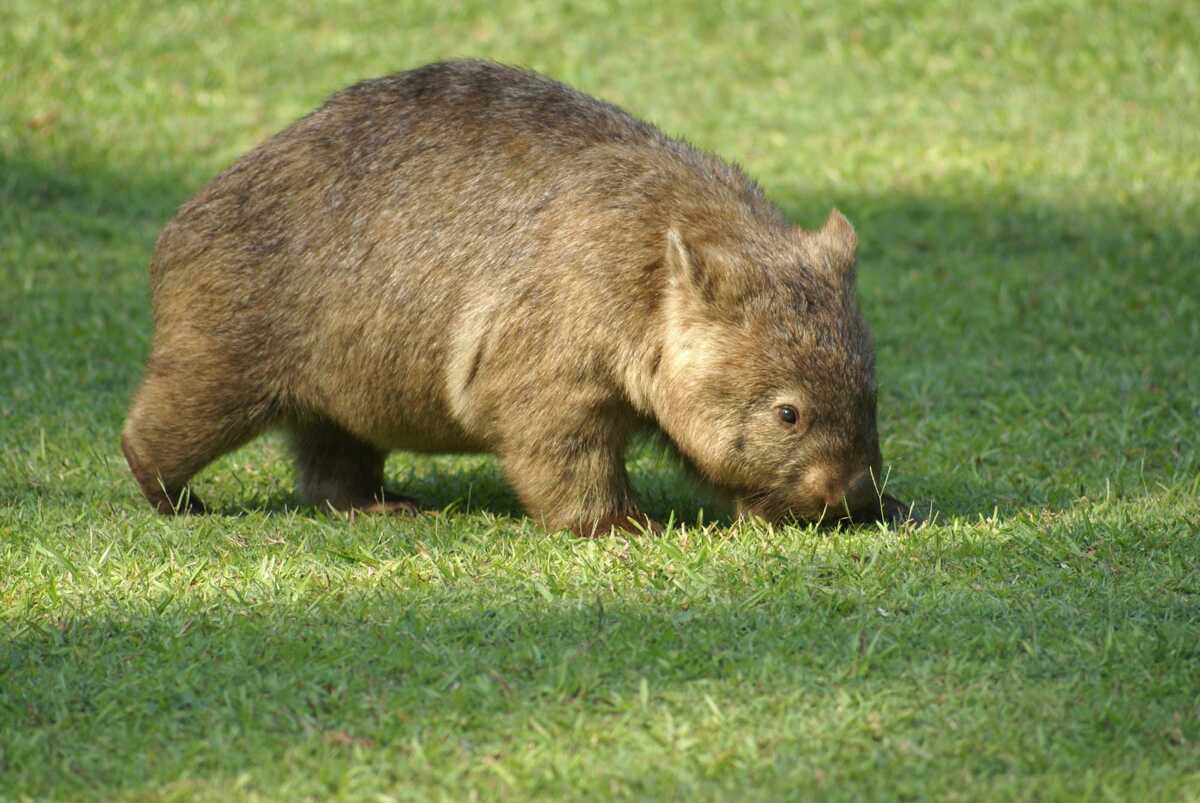(Perameles nasuta) This nocturnal animal is about 40 cm long, with sandy- or grey-brown fur and a long snouty nose. It feeds on invertebrates, fungi and plants.
Image by Greg Schechter
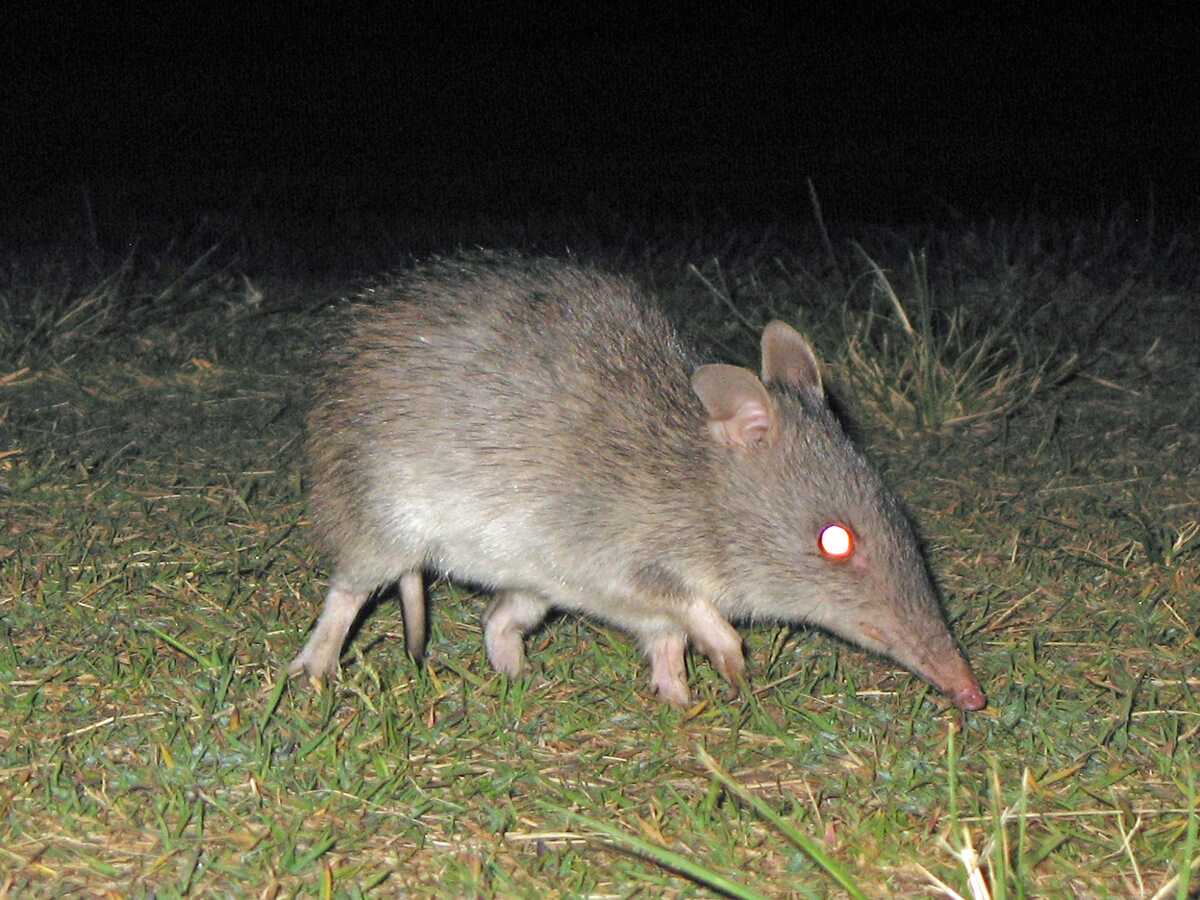
(Canis lupus dingo) This medium-sized canine has a lean, hardy body adapted for speed, agility, and stamina. Its coat colour ranges from light ginger or tan, black and tan, or creamy white. It feeds on mammals up to the size of the large red kangaroo and other smaller animals.

(Dasyurus maculatus) This carnivorous marsupial is native to Australia. With 81-93 cm in length and weight around from 1.8 to 3.5 kg, it's the world's second-largest extant carnivorous marsupial, behind the Tasmanian devil. It has short legs and a tail the length of its body and head combined. Its upperside fur is reddish-brown with white spots and its underside is greyish or creamy white.
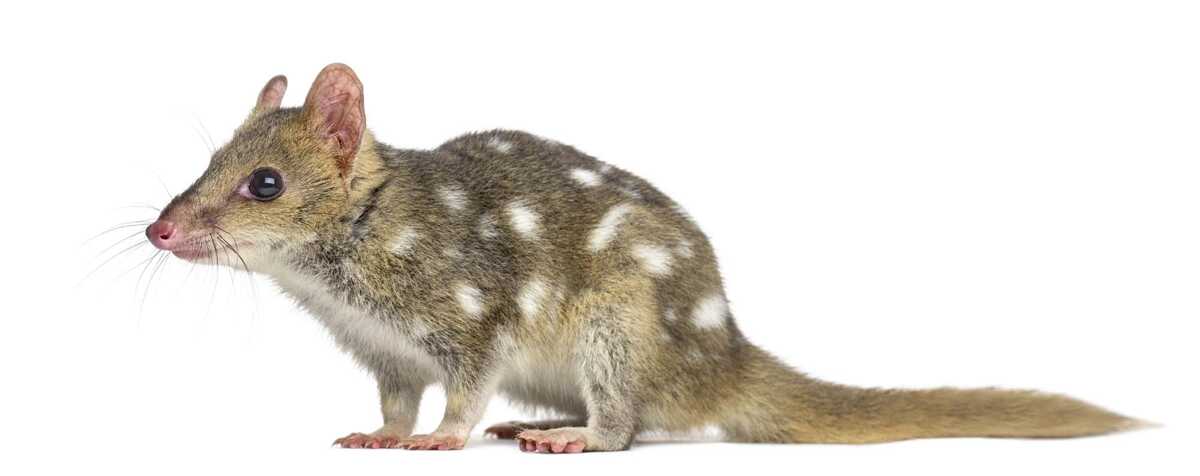
(Antechinus stuartii) This marcupial is the world's smallest semelparous mammal. It's 9-13 cm long and has light brown fur with a lighter brown below and on its tail.
Image by Glen Fergus
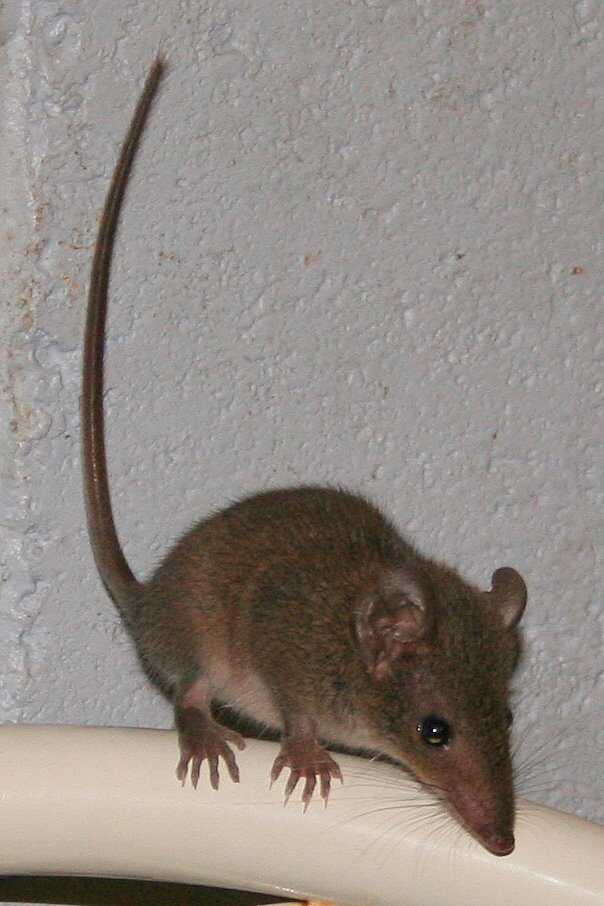
(Macropus giganteus) This kangaroo is the second-largest and heaviest living marsupial and native land mammal in Australia. It stands almost 2 m tall. It has a strong tail that can be over 1 m long. It has soft grey fur with a lighter silver, cream or nearly white belly. It can reach a speed of 64 km/hour.
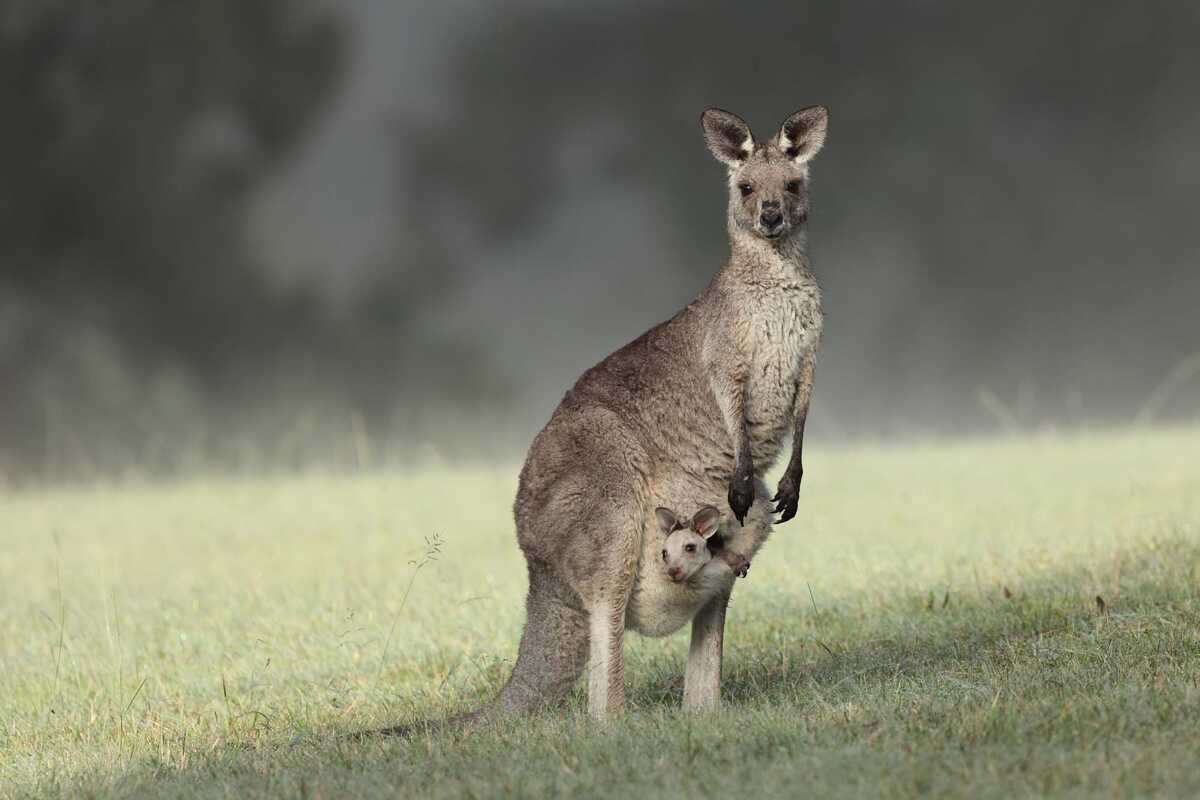
(Notamacropus rufogriseus) This wallaby has medium grey fur with a reddish wash across the shoulders, black nose and paws, and a white stripe on the upper lip. It is 90 cm long and can weigh between 13.8-18.6 kg. It is similar in appearance to black-striped wallaby (Macropus dorsalis), but the red-necked wallaby is larger and doesn't have a black stripe down the back.
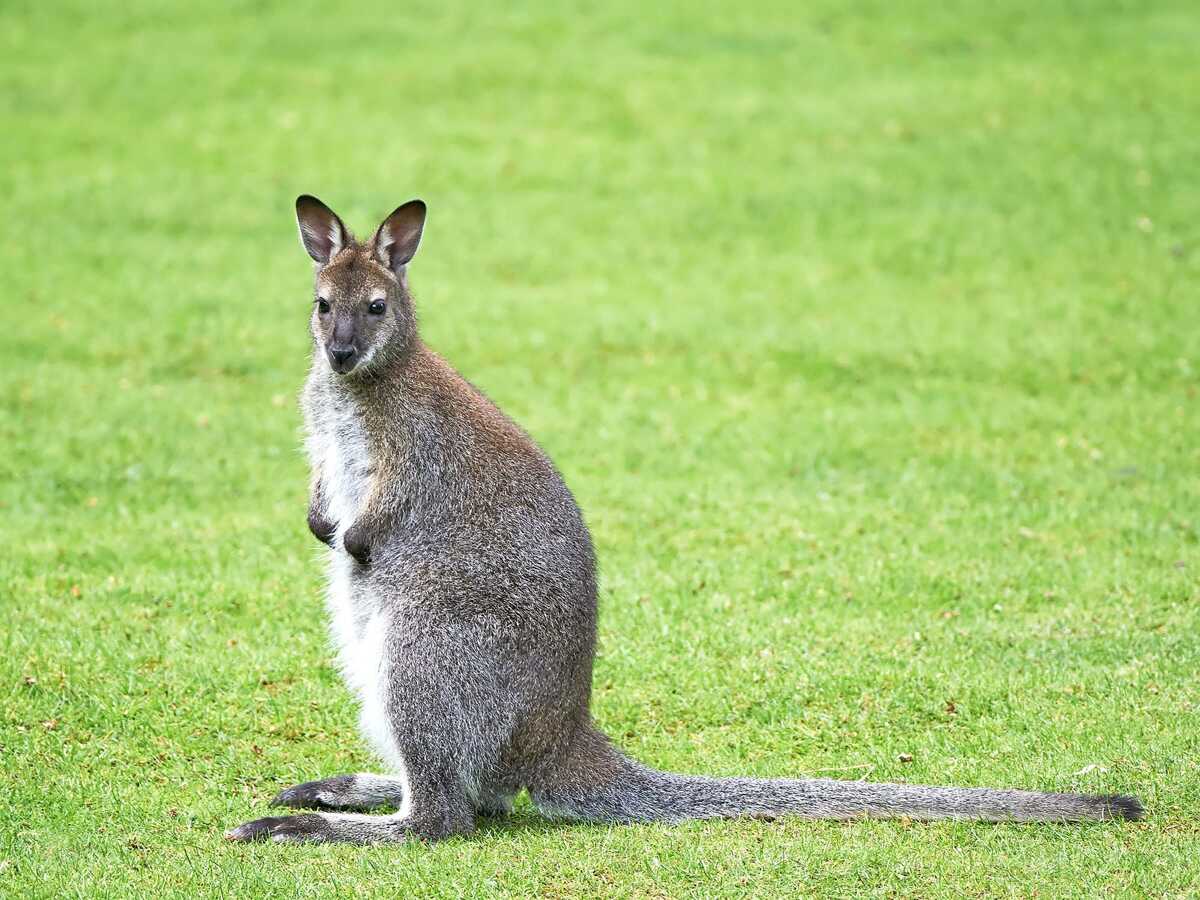
(Wallabia bicolor) Swamp wallaby carryies its head low and its tail out straight. It grows up to 70-76 cm long. Its fur colouring varies greately, from the grey coat with a dark brown to the black region on the back, and light yellow to rufous orange on the chest. It usually has a light coloured cheek stripe and the tip of the tail is often white.
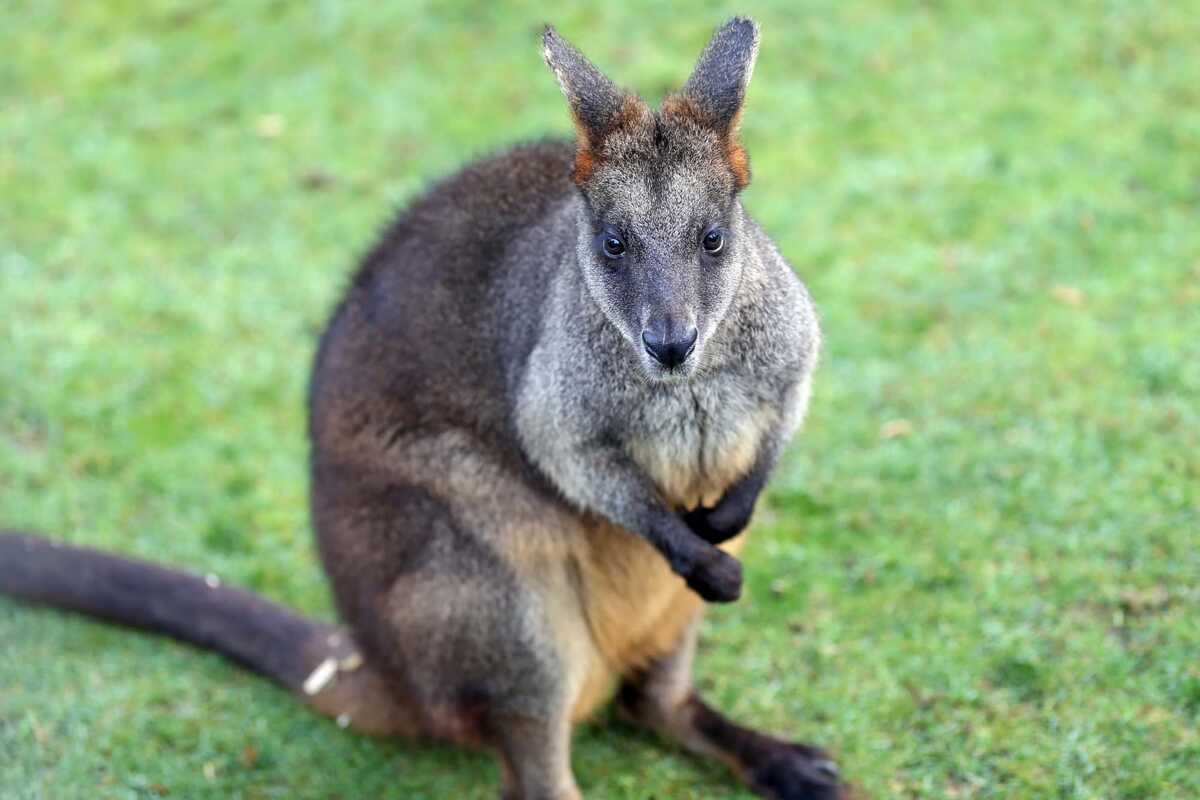
(Rattus fuscipes) This small Australian nocturnal animal grows up to 10-20 cm in length. It has greyish or reddish-brown fur with a light grey or cream underside. Its foot pads are pink and the tail is a pink shade of brown, almost free of hair.
Image by Katrin Solmdorff
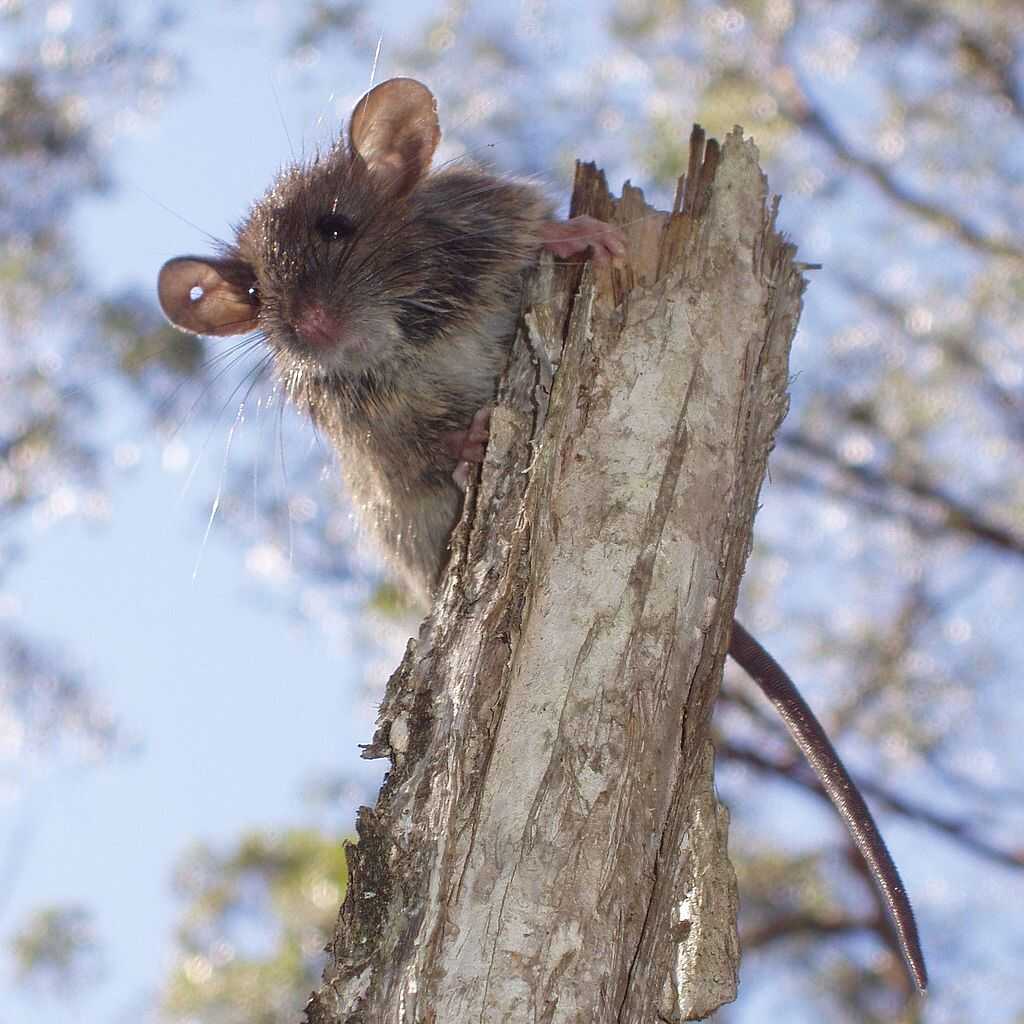
(Petaurus breviceps) The sugar glider got its name from the pair of gliding membranes (patagia), which extend from its forelegs to its hindlegs and allows the animal to glide up to 50 m between trees. It has soft, pale grey to light brown fur with a prominent dark dorsal stripe that extends to the forehead, and a lighter underside.

(Trichosurus caninus) It has dark grey fur with cream or yellow/orange underparts. It has a thick black tail and black-brown strip down the underside.
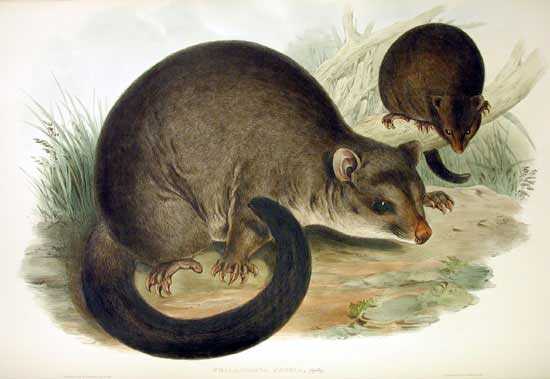
(Pseudocheirus peregrinus) This Australian marsupial got its name from the Greek word for "false hand" and Latin word for "pilgrim" or "alien". It is 30–35 cm long and has grey or black fur, white patches behind the eyes and usually a cream coloured belly. Its long tail which usually has a white tip.

(Petauroides volans) This nocturnal solitary herbivore can be found in Eucalyptus forests since its main source of food is Eucalyptus leaves and buds. It has brown or grey-to-white fur.
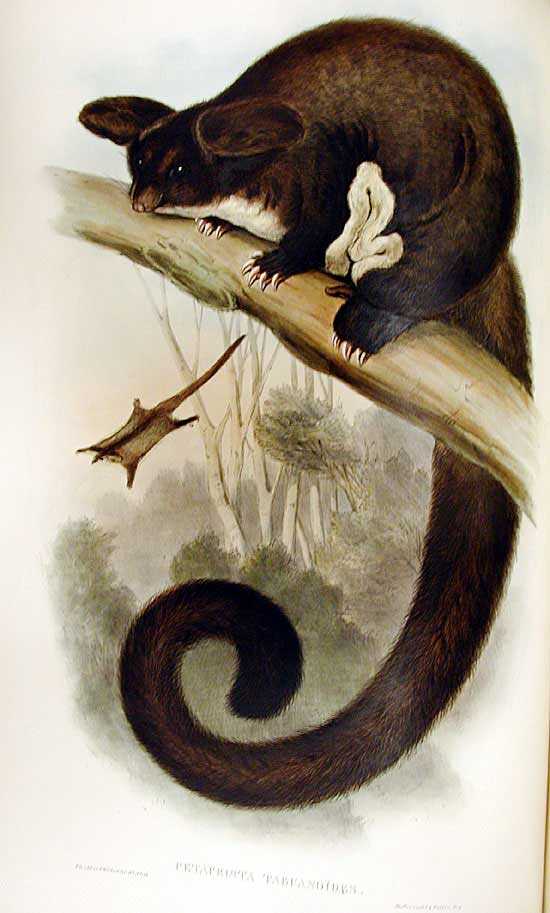
(Tachyglossus aculeatus) This mammal is covered in fur and spines. It has very strong front legs and claws, which allow it to burrow quickly and with great power. Its distinctive snout and specialized tongue enable it to catch insects at a great speed. Like other monotremes it lays eggs.

(Phascolarctos cinereus) This arboreal herbivorous marsupial is native to Australia. It is 60–85 cm long and weighs 4–15 kg. It has silver-grey to chocolate brown fur. It lives in open eucalypt woodlands and feeds mostly on eucalypt leaves. They sleep up to 20 hours a day.
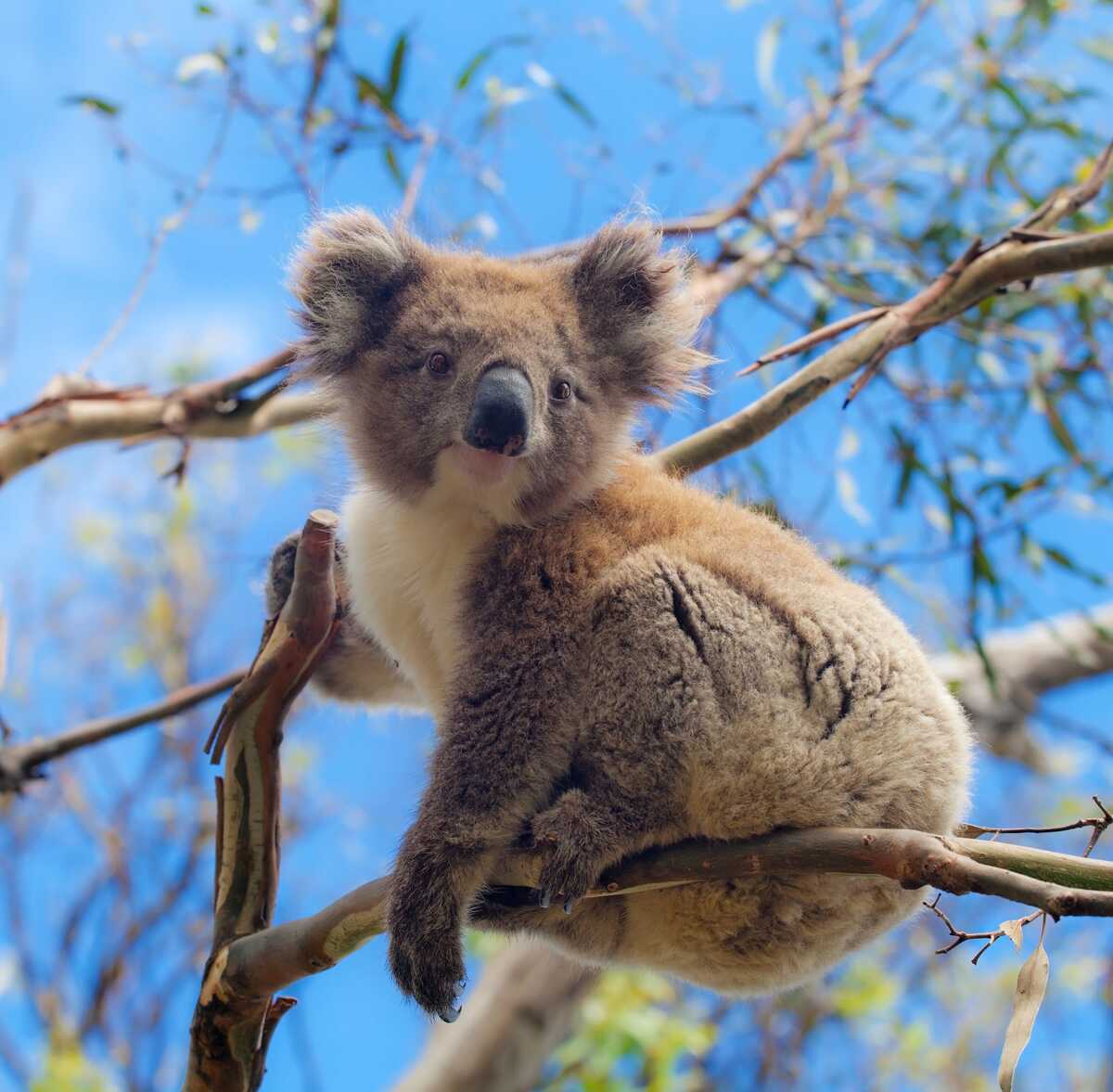
(Vombatus ursinus) This marsupial is about 98 cm long with black, dark grey, silver-grey, chocolate brown, grey-brown, sandy or cream fur. Its short body is sturdy and built close to the ground, with small eyes and a bald nose.
